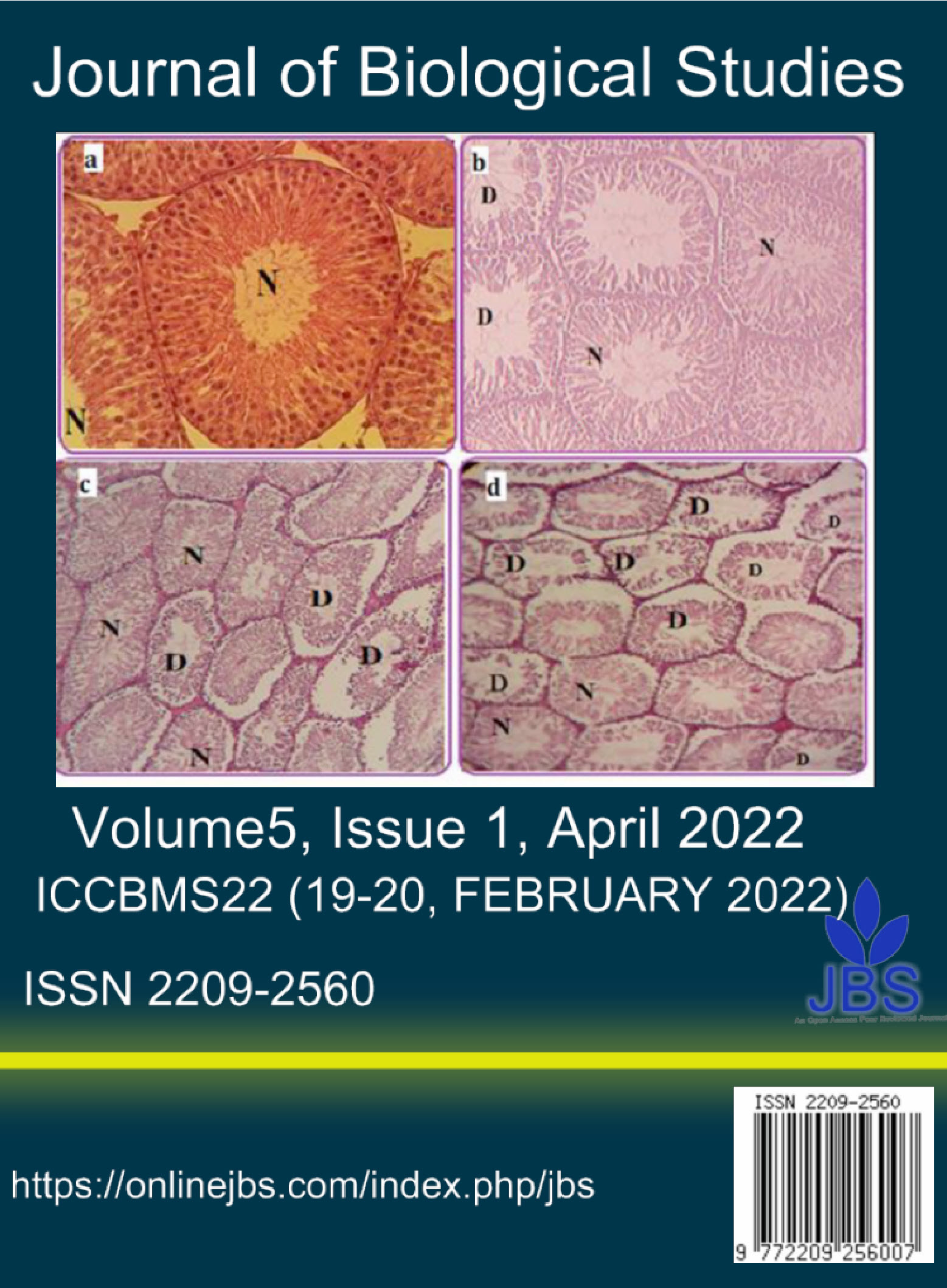Cost-benefit Analysis of Rohu (Labeo rohita) Reared in In-pond Raceway System and Commercial Earthen Pond
Main Article Content
Abstract
The present study was conducted to determine the cost and benefits of a commercially important major carp Labeo rohita (Rohu), reared under In-pond Raceway System (IPRS) and Commercial Earthen Pond (CEP) for 90 days from 1 October to 30 December 2021. Rohu is considered to be one of the widely available and highly favorable cultured fish in
Bangladesh. However, this is the first comparative study on the cost-benefit analysis of rohu in these two aquaculture systems. In total, 13,000 individuals of healthy L. rohita, weighing from 180 to 190 g were stocked in an IPRS cell having an area of 220 m3 of each cell and the area of pond is 1.38 acre, while in the CEP of 1.38 acre was stocked with 5,500 individuals of the same species and same size. A commercial Afil fish feed was used during the experiment. The fishes
were fed 3 times at 4 hours of interval in the IPRS cell and 2 times at 12 hours of interval in CEP, respectively during day times. After stocking, all fishes in the IPRS cell were fed at the rate of 5.5-6.0% of body weight for the first 15 days, 5.0-5.5% for the next 15 days, 4.5-5.0% for the next 15 days, 4.0-4.5% for the next 15 days, 3.5-4.0% for the next 15 days and 3.0-3.5% for the last 15 days, while fishes in the CEP were supplemented with the same feed at 4.5-5.0% for the first 30 days, 3.5-4.0% for the next 30 days and 2.5-3.0% for the remaining 30 days. The mean water quality parameters such as temperature, pH, DO and ammonia-nitrogen were 25.34±4.56°C, 7.8±0.34, 6.62±0.34 mg/L and 0.03±0.01 mg/L in IPRS, and 26.04±4.53°C, 7.57±0.28, 5.41±0.20 mg/L and 0.39±0.26 mg/L in CEP, respectively. At the end of the 90-day rearing experiment, total production of rohu fish was obtained to be 9,295 kg and 2,814 kg in IPRS and CEP, respectively. The estimated total costs and net benefits were BDT 9,20,059 and 5,20,665, and BDT 3,52,679 and 69,473 in IPRS and CEP in this order. The cost-benefit ratio in IPRS and CEP was found to be 1.66 and 1.28, respectively. The findings from our study revealed that IPRS is better than CEP for the rearing of L. rohita in respects of higher production and net benefits.
Article Details

This work is licensed under a Creative Commons Attribution 4.0 International License.
